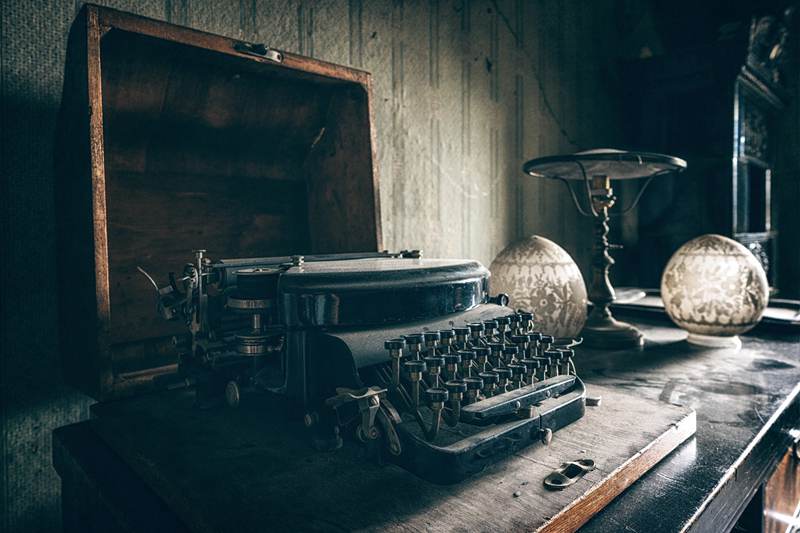In the world of collectibles, fashion, and décor, age is not just a number. The real or estimated age of an item can influence its value, quality, condition, and even its market price.
To the layperson, terms such as vintage, antique, collectible, reproduction, and retro all mean the same thing but this couldn’t be further from the truth. Any well-versed collector will tell you that interchanging antique for vintage is a cardinal sin.
So, what gives? What really is the difference between vintage vs antique? Whether you are looking to buy and sell items from the past, or you want to label your décor theme correctly, making the distinction between vintage and antique is a good place to start.
Keep reading to learn more about the differences between vintage and antique.
Table of Contents
What Is An Antique?
An antique is an item that is 100 years of age or older. The term refers strictly to the age of an item regardless of the material it is made from or the nature of the item.
From books to pieces of furniture, jewelry to kitchenware, all these items can be classified as antique as long as they are at least 100 years old.
Contrary to popular belief, not all antiques are valuable. You would have to get an item professionally appraised to determine its value. But, generally, the more rare, desirable, older, and in good quality a piece is, the likelier it is to be a valuable antique that can fetch a substantial amount on the market.
Examples of antiques include Depression glass of the 1920s, Victorian-era figurines and table lamps, 1920 collectibles such as mirrors and perfume bottles, and Edwardian era furniture inspired by that period’s arts and crafts.
The most valuable antique pieces tend to be those that are limited in quantity, for example, Chinese vases from the early Song era. Other valuable pieces are those that have been signed by their famous owner, and those that were pre-owned by a well-known figure.
How To Identify an Antique
To the untrained eye, identifying a genuine antique is not always easy. But, it is entirely possible to learn this craft and with time, you will even be able to accurately approximate the age of an antique item.
To learn how to identify an antique, you will have to start with the basics. Here are some of the key things you should keep in mind:
- The maker’s mark
First, you want to find out the maker or manufacturer of the item. Each manufacturer had their own trademark usually imprinted on a hidden spot on the item but sometimes the mark is easily visible. For example, for antique pottery items and glassware, you can find the maker’s mark imprinted on the bottom of the item. On furniture, the manufacturer’s mark is often in a hidden spot, for example, inside a drawer or at the back of a wooden seat.
You might have to do some internet research to match a manufacturer’s mark with the period of time that the item is presented to have been manufactured to determine its age and therefore its status as an antique.
Keep in mind though that imitators can forge a maker’s mark so this is definitely not the only thing you should check to identify an antique.
- Craftsmanship
Many but not all antique items are handmade and built to last. While there are plenty of low-quality pieces that are over 100 years old, many are of excellent quality.
Take time to check that an item that is presented as antique is of good quality and uses the same construction techniques that were used in the era that the item is presented to have been manufactured.
- Age marks
Because an antique is 100 years or older, it is bound to have some signs of aging. It is not always easy to know whether age marks on a so-called antique are genuine because imitators use many age faking methods to make an item look older than it actually is. It helps to learn more about the history of a particular item to get an idea of how the item might naturally age.
If you are shopping at a flea market where you might not have too much time for in-depth research, you can look for signs of aging such as discoloration and tarnishing on items such as silverware, gold, and other metals.
Antique dishes might have hairline cracks and crazes on specific locations such as around the rim or on the underside. Furniture on the other hand might have some scratches and signs of wear and tear, in addition to featuring a period-specific style.
All in all, the age marks should look as random as possible. Sometimes, fake age marks can be so well positioned in a way that the item in question would naturally not age that way.
What Is Vintage?
An item is defined as being vintage if it is at least 20 years old. But, apart from the concept of age, in the true sense of the term, vintage points to an item belonging to a specific era. For, example, you could speak of a 1960s vintage dress or a 1980s vintage lamp.
Vintage is also a way to describe the culture of a particular period in time. Therefore, vintage items are also sometimes categorized as collectibles depending on how many of these items were produced and are currently available. Some popular cultures that spawned equally popular vintage items include the sports culture, hip-hop culture, and clothing culture, just to mention a few.
Just like antiques, some vintage items are more valuable than others depending on factors such as their desirability, their association with a popular trend or well-known personality, and their utility. Of course, the value of a vintage item will not be too much of a concern if you are just looking to collect these items for the sake of nostalgia, to use as décor or as a fashion statement.
Tips for Identifying A Vintage
Identifying a vintage piece is slightly easier because there is more reference material to help with your research. Different categories of vintage items have their own methods of checking for authenticity but generally, this is what you should keep in mind:
- Quality
Just like with antiques, you can avoid vintage reproductions by paying close attention to the craftsmanship and quality of the item. A reproduction will usually have noticeable or subtle design flaws and will likely use substandard materials. This will instantly tell you that you are not dealing with an original vintage item.
- Style
A vintage piece should correspond with the overall style of the period the item is presented to have originated from. For example, true early vintage clothing majorly featured thick and sturdy metal zippers as opposed to plastic ones. A piece of clothing that is presented to be 1950s vintage, for example, and comes with a plastic zipper might not be a genuine vintage.
Each era had its own style so you would have to familiarize yourself with the style of a specific period to tell if an item really belongs to that period.
- Maker’s mark
As with antiques, checking the maker’s mark on a piece can tell you a lot about its age. Whether you are dealing with clothing, trinkets, furniture, or décor pieces, locate the manufacturer’s name and their trademark. If you do not recognize the mark, the piece might be vintage. If you know the overall style of a particular period, then you can compare the maker’s mark with this style to see if there is a match—there should be a match if the item is a genuine vintage.
Extended Tips
- Get your antique or vintage item reviewed and authenticated by a professional appraiser. This way, you will know the value of your items, which is obviously important if you are buying or selling antique/vintage items.
- If you are buying a piece for its value, ask as many questions as you can about the item before purchasing. A genuine and knowledgeable seller will be happy to avail all of the information you need.
Learn the difference between vintage and antique and make smarter decisions
The terms vintage and antique are used interchangeably but there are significant differences between the two. Age-wise, antiques are much older than vintages. But, items in both categories can be valuable depending on their rarity, desirability, association with celebrities or important personalities, and the importance/rigor of a subculture.
Whether you like collecting as a hobby or an investment, it takes some practice to really identify real antique and vintage pieces. To become a pro, read as widely as you can about the history, styles, manufacturing techniques, and prevailing culture of older items, then try to narrow down on one area where you can specialize in identifying specific pieces using your newfound knowledge.






![Vintage Schwinn Bikes: [Types, Identification, and Values]](https://www.txantiquemall.com/wp-content/uploads/2022/05/5.-Schwinn-1967-Ramshorn-Fastback-Stingray-Sky-Blue-vtg-600x450.jpg)

